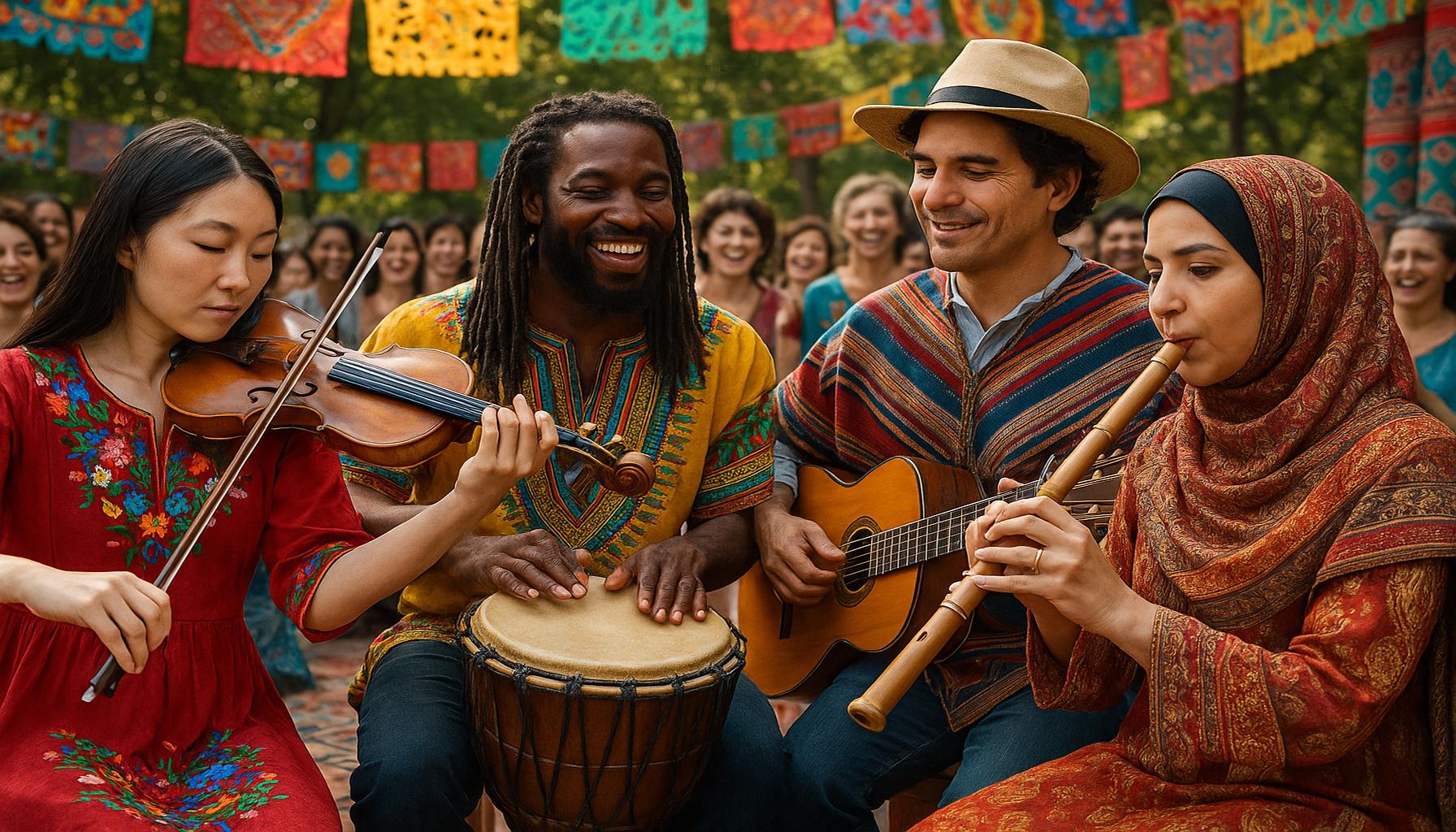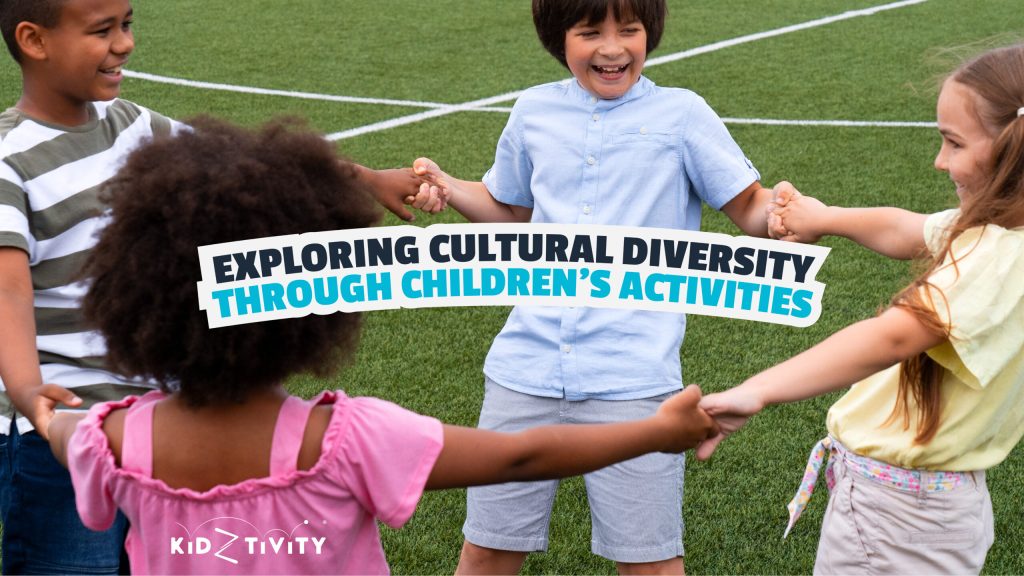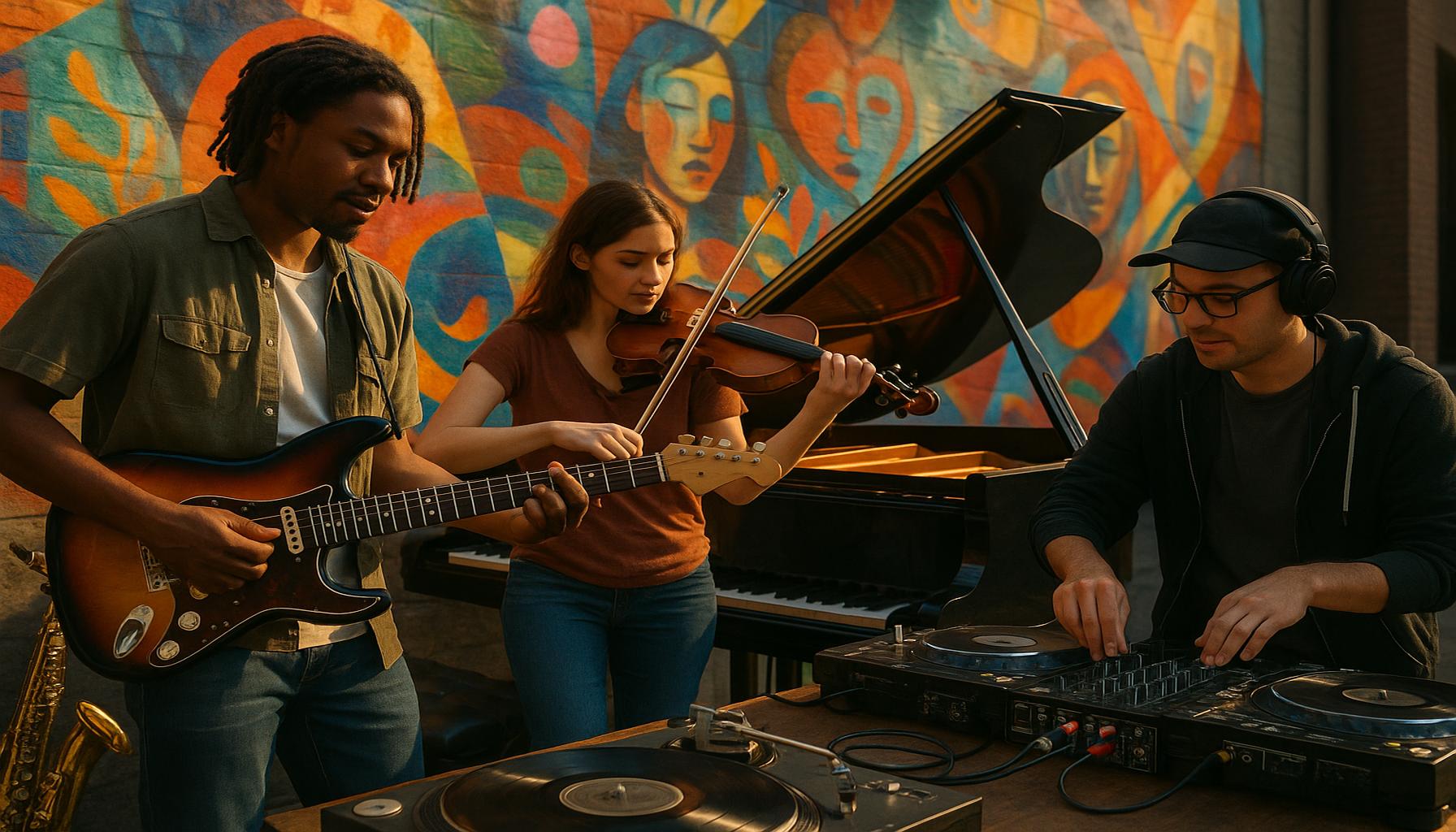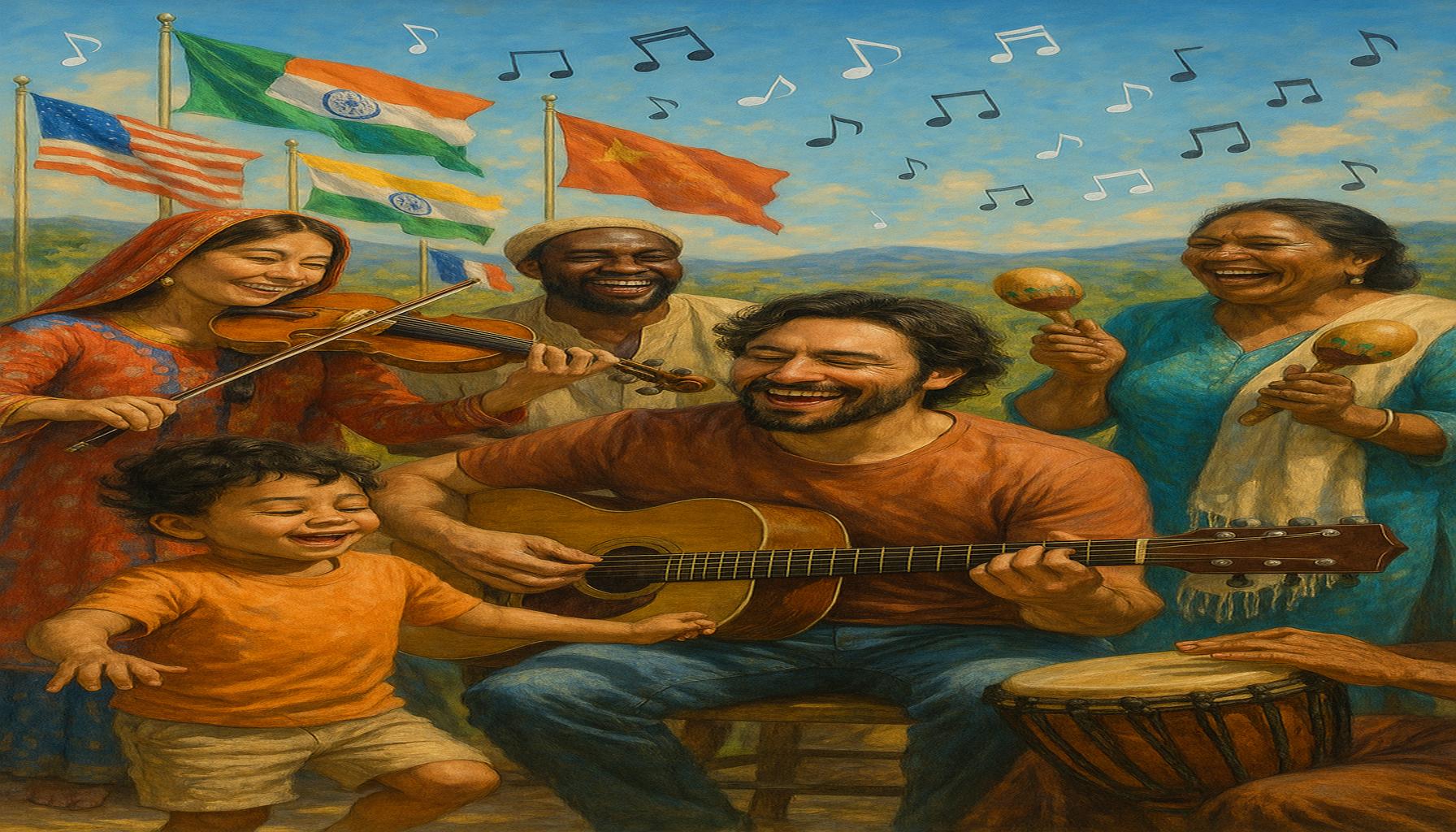Music as a Tool for Inclusion: Promoting Cultural Diversity Through Music

Unveiling the Role of Music in Promoting Cultural Diversity
Throughout history, music has served as a vibrant thread woven into the fabric of human connection. It transcends geographical and linguistic boundaries, emerging as a universal language that fosters empathy and understanding. In an increasingly interconnected world, the role of music as a tool for inclusion becomes crucial in celebrating and preserving the rich tapestry of cultural diversity. Building bridges between communities, music not only entertains but also cultivates a sense of belonging and shared identity.
One of the most prominent ways in which music fosters cultural diversity is through community events. Festivals like the Newport Folk Festival in Rhode Island or the South by Southwest (SXSW) in Texas showcase a vast array of musical styles from artists all over the world. These events invite participation from diverse backgrounds, creating an atmosphere where attendees can experience different cultures through sound. For instance, the Chicago Blues Festival not only honors the origins of blues music—which has deep roots in African American history—but also attracts musicians and fans from various cultural backgrounds, promoting inclusivity and cross-cultural interaction.
Furthermore, collaborative projects in music often yield innovative artistic expressions that blend different cultural influences. One notable example is the collaboration between African musicians and Western artists. Projects like “Playing for Change,” which unites musicians across the globe, highlight the ability of music to create a dialogue of shared experiences and mutual respect. These collaborations often result in unique genres that reflect a fusion of distinct sounds, like Afrobeat, which merges traditional West African music with jazz and funk elements, captivating a broad audience.
Moreover, educational programs play a critical role in enriching students’ understanding of global cultures. Schools across the U.S. are increasingly integrating world music into their curricula, effectively teaching students about the traditions and histories behind various musical forms. Programs such as the Kindiependent music movement encourage children to appreciate music’s diversity from an early age, fostering a sense of curiosity and respect towards different cultures.
In the United States, local music initiatives and community-driven events further exemplify how music bolsters social cohesion. Organizations like the National Endowment for the Arts support projects that create platforms for underrepresented voices, ensuring that communities can share their unique stories through music. The resulting cultural exchanges not only enhance artistic expression but also cultivate a deeper understanding of the intricacies of different traditions.

As we explore the multifaceted impact of music on cultural diversity, it becomes evident that it serves as more than mere entertainment—it acts as a profound bridge that connects diverse societies. By engaging with music from various cultures, we enrich our lives and contribute to a more inclusive future, ensuring that every voice is heard and celebrated within the global narrative of human experience.
DISCOVER MORE: Click here to learn about the therapeutic benefits of creative writing in stress management
Community Engagement Through Music
At the heart of music’s power to promote cultural diversity lies its ability to foster community engagement. This engagement manifests through various platforms, where music serves as a means to unite individuals from varied backgrounds, encouraging interactions that may not occur in everyday life. Community concerts, public jam sessions, and localized music workshops invite participation, bridging gaps between cultures and forming a collective identity that champions inclusivity.
Notably, grassroots movements across urban and rural landscapes in the United States exemplify how music can be leveraged for social cohesion. Programs such as the Los Angeles Music Center’s “Younity” initiative actively engage young artists from different ethnicities, allowing them to collaborate and learn from one another. Such initiatives not only provide opportunities for professional growth but also break down cultural barriers through shared musical experiences. This collaborative spirit extends to cities like New Orleans, where the rich blend of jazz, blues, and Cajun music reflects the city’s diverse cultural heritage, attracting locals and visitors alike to celebrate together.
In addition to fostering personal connections, music education programs play a vital role in nurturing cultural appreciation among younger generations. By introducing students to global musical traditions, these programs serve to inform and inspire a sense of belonging in a culturally rich society. For instance, the Walmart Community Playbook empowers local schools to host cultural music days, where students perform and learn about different genres, from mariachi to hip-hop. These activities not only enrich students’ educational experiences but also cultivate a mutual respect for the diversity that characterizes the nation.
Moreover, neighborhood festivals promote cultural exchange by celebrating music traditions from various heritage groups. Events like the National Puerto Rican Day Parade in New York City feature performances by both established artists and local talents, showcasing salsa, merengue, and other Latin musical styles. These celebrations create a vibrant atmosphere where community members come together, fostering a sense of unity while highlighting the individual experiences that each culture contributes to the wider community narrative.
- Community Events: Local festivals and concerts serve as rallying points for different cultures, encouraging participation and engagement.
- Educational Programs: Schools that incorporate world music into their curricula provide children with a foundation for understanding cultural diversity.
- Grassroots Movements: Initiatives that empower local artists strengthen ties within the community and promote shared identity.
As we delve deeper into the ways music acts as a conduit for cultural diversity, it becomes increasingly clear that its role extends far beyond notes and rhythms. Music fosters social interactions and collective experiences that not only celebrate diversity but also challenge preconceived notions of culture and identity. By embracing the sounds of different traditions, communities enrich their cultural landscape, leading to a greater understanding and appreciation of the multifaceted world around us.
| Advantages | Impact |
|---|---|
| Fostering Community Engagement | Music brings together diverse groups, creating an environment where collaboration and unity thrive. |
| Enhancing Cultural Awareness | Through music, individuals gain insights into various cultural backgrounds, promoting acceptance and understanding. |
The topic of using music as a medium for inclusion transcends mere entertainment; it serves as a powerful instrument for education and cultural exchange. By fostering community engagement, music cultivates a safe space where diverse individuals can share their stories and experiences. This exchange enhances interpersonal relationships and facilitates collaboration among varied cultural groups. Furthermore, music acts as a catalyst for cultural awareness. Through listening, sharing, and participating in musical activities, individuals can gain insights into the traditions and practices of others, leading to increased empathy and understanding. As communities embrace musical practices from different cultures, they not only enrich their own artistic landscape but also contribute to a vibrant tapestry of global diversity. By harnessing the rhythms and melodies that unite us, we pave the way for future generations to experience a world where cultural differences are not just tolerated but celebrated.
DIVE DEEPER: Click here to uncover sustainable craft techniques
Music Therapy and Healing Across Cultures
In the realm of music therapy, the intersection of music and cultural diversity presents a unique opportunity for healing and connection. Music therapy programs across the United States often incorporate diverse musical styles and traditions, enabling practitioners to address various emotional, psychological, and physical challenges facing individuals from different backgrounds. This practice not only promotes healing but also validates the rich cultural experiences of patients, creating a therapeutic environment where identity and heritage are embraced.
For instance, research has shown that music therapy can effectively support mental health by providing a safe space for individuals to express their feelings through familiar cultural sounds. Programs like the Music Therapy Center of California emphasize incorporating various musical traditions, helping clients reconnect with their roots and personal narratives through song. This approach is particularly impactful for minority communities, who may feel marginalized or disconnected in broader healthcare contexts. Moreover, the healing power of music transcends language barriers, allowing therapists to communicate effectively with clients from diverse linguistic backgrounds.
Furthermore, musical improvisation and collaborative creative activities can significantly enhance cognitive function and emotional expression among individuals with diverse cultural backgrounds. Non-profit organizations, such as Music For Life, have pioneered initiatives that bring together musicians from different ethnic communities to engage in spontaneous collaboration. These projects offer a platform for self-discovery and mutual inspiration, often leading to the creation of entirely new musical genres that reflect the eclectic mix of influences from the participating cultures.
Community outreach programs using music as a tool for engagement and healing have also gained traction. In cities like Chicago and Detroit, organizations focus on providing music therapy sessions in local shelters and community centers, tailoring their approach to fit the cultural backgrounds of the participants. For example, implementing themes from African drumming or Middle Eastern music can resonate deeply with those who share that heritage, leading to an enriching and empowering experience. By honoring these cultural expressions, such programs enhance participants’ sense of identity and belonging.
- Therapeutic Benefits: Music therapy fosters emotional and psychological healing by allowing individuals to engage with their cultural roots.
- Cognitive Engagement: Collaborative music-making can improve cognitive skills and promote social connections among diverse groups.
- Outreach Initiatives: Community-focused programs deliver essential music therapy services to marginalized populations, enhancing their quality of life.
Additionally, the integration of music therapy within educational settings is proving beneficial for students whose backgrounds are underrepresented in traditional curricula. Music education specialists are increasingly recognizing the importance of incorporating a variety of world music traditions to create a holistic educational experience. Schools that feature multi-genre music programs encourage students to explore different cultures through music, facilitating a deeper understanding and appreciation of diverse perspectives.
As we examine the potential of music as a catalyst for inclusion, it becomes evident that by nurturing a deep connection to diverse musical traditions, we can foster a more empathetic and informed community. Through therapy, collaboration, and education, music acts as the common thread that weaves individuals together, enriching the cultural tapestry of society as a whole.
DISCOVER MORE: Click here to learn how creativity can alleviate stress
Conclusion
In conclusion, the role of music as a tool for inclusion is profound and multifaceted, with its ability to transcend cultural barriers and promote understanding in diverse communities. From music therapy that fosters healing to educational initiatives that celebrate world music, the integration of various musical traditions is essential in creating inclusive environments where individuals can express their identities and share their stories.
The therapeutic benefits of music extend beyond mere entertainment; they provide a pathway for emotional healing and cognitive engagement, particularly for marginalized populations. Programs addressing the unique needs of these communities empower individuals by helping them connect with their cultural heritage. Additionally, collaborative music projects offer opportunities for creativity and self-expression, enabling people to form friendships and strengthen social bonds that might otherwise remain elusive.
As we move forward, it is crucial to continue investing in outreach initiatives that leverage the power of music to unify and heal. By incorporating diverse musical styles into educational curricula, we can cultivate empathy and appreciation among students, fostering a more inclusive future. The potential of music to transform lives and bridge cultural divides is immense, and by championing these efforts, we can ensure a richer, more vibrant tapestry of societal interactions.
Ultimately, music serves as a universal language that speaks to the heart of our shared humanity. As we explore new ways to utilize music for cultural diversity and inclusion, we must remain committed to celebrating and honoring the unique contributions that every culture brings to the global stage.


